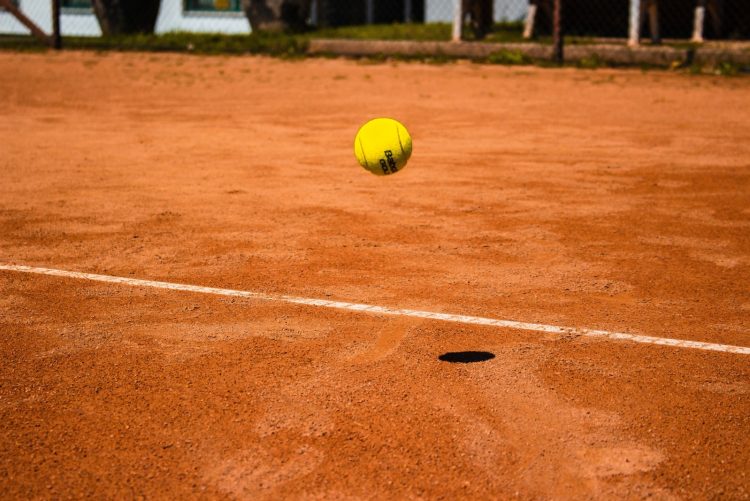Posted on June 27, 2019
It’s estimated that, in the UK alone, the sports industry is worth £20 billion per year, supporting around half a million jobs. Innovation is a make-or-break factor in elite professional sports; winning or losing can be attributed to marginal gains. The same can be said of popular sports brands, which race to protect the latest in mass-market popular products, from sand boards to skis and from racquets to racing bikes.
Here’s a snapshot of patents protecting sports – from the earliest patents protecting the most basic of equipment, to the latest tech covering creative sports nutrition.
Eyes on the Ball: IP for Spectator Sports and Referees
FIFA estimate that 4.57 billion people watched the 2018 Football World Cup, with 1.12 billion watching the final alone. Given the enormous public interest in televised sports events, it’s important to get the adjudication spot on. That’s why, at the turn of the century, the Hawk-Eye computer system was developed to visually track the flight of a ball and to generate a profile of its most likely trajectory. The system has been rolled out into some of the most heavily spectated sports, such as football, cricket, tennis, rugby, badminton and volleyball to name a few.

Roke Manor Research Limited developed the first such system, and filed GB 9929193.2 in 1999, aiming to protect an early form of this video processor system for tracking a ball. Whilst that patent (and the corresponding PCT application, WO0141884, which claimed priority from GB 9929193.2) did not proceed to grant, the technology and IP was subsequently spun-off into Hawk-Eye Innovations Ltd. The following years saw a deluge of patent applications to similar systems, filed by Hawk-Eye and others. In 2011, Hawk-Eye was sold to electronics giant Sony for an undisclosed sum.
Whilst Hawk-Eye is not foolproof, it has certainly upped the ante on fair adjudication and made watching sports, live or on TV, ever more interesting.
Gear Up: Sportswear and Equipment
One of the earliest-filed patents to a piece of sports equipment was US 1549971, filed in 1924 to protect a hockey stick. Fast-forward, and hockey stick patent applications are still being filed today - for example, Adidas’ EP 3348309. Adidas are, however, arguably best known for their sports footwear and apparel. Nike, Adidas, Reebok, Asics and New Balance (to name a few) are household names in the UK. All five of those companies have filed patent applications in various jurisdictions to cover a myriad of footwear-related inventions.

The innovations seen in footwear have been matched in other areas – including specialised sports sunglasses, which can be adapted to anything from Grand Tour cycling to skiing. Oakley, as a key player in the specialised sunglasses and sports eyewear market, have devotees that include cycling Team Ineos (formerly Team Sky). Oakley place a high value on their IP. EP 3447563, filed by Oakley in 2012, is a representative example of their sunglasses tech. That application is directed to an optical filter for sunglasses, which attenuates visible light in several spectral bands. One of their more recent patent applications, filed in 2018, is US 2019/133224. This application seeks to protect a sweat-wicking apparatus to divert sweat away from the user’s eyes and/or eyewear. Oakley’s products appeal both to the professional athlete and to the mass market – i.e. to cyclists, runners and other athletic enthusiasts seeking to maximise the comfort of their workout.
Even quirkier sports equipment and apparel patents exist out there – from underwater treadmills (US 2019/134458) to hollow ski poles designed to store drinks (US 2019/134489).
Feeding the Machine: Sports Nutrition
GatoradeTM was one of the first drinks tailored to sports nutrition, made famous as the go-to drink of the NFL. Fast-forward to the current market, and the range of products on offer is staggering – from meal replacement packs to electrolyte drinks to glucose tablets and more.
Patent protection has proved a popular means of carving out a share in this crowded market, both for larger organisations such as Suntory (the owner of LucozadeTM) or Red Bull GmbH, and smaller individual inventors and start-ups. Energy bars are used not only by serious athletes but also as workout fuel by the general public – hence, even Hershey’s (known more for indulgent chocolate bars than healthy sports offerings) has sought to patent its so-called “health bars”. US 8088431, granted in 2012, protects a Hershey’s health bar. More futuristically, one Chinese university has sought to protect a nutrient-packed energy bar containing polysaccharides derived from Auricularia fungi (CN 104543681) claiming that it could be useful for sportspeople and astronauts alike. Athletes can even choose to administer supplements directly to their bloodstream via a skin patch (US 6475514).
What’s next?
Protecting innovation in the sports sector has arguably never been so important. Whilst the focus here has been on patents, sports innovation can also be protected by trademarks, copyright and registered designs.
Get in touch if you'd like to discuss further how we can assist you with identifying and protecting your brands and ideas.
Author

Anne-Marie Conn Trainee Patent Attorney